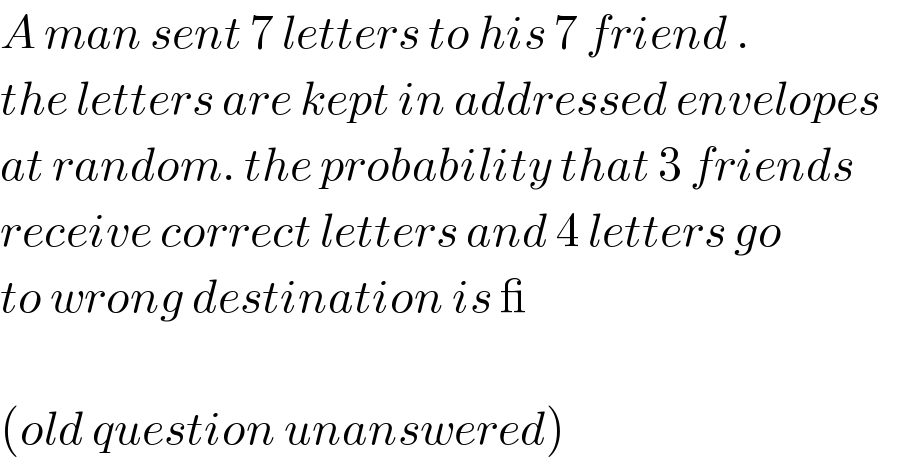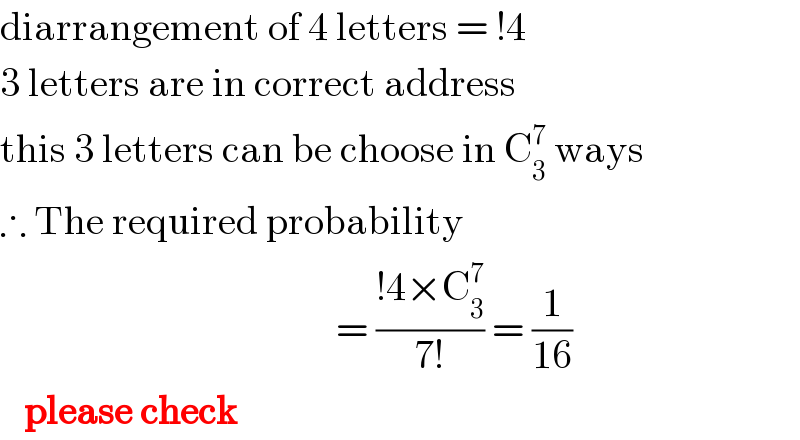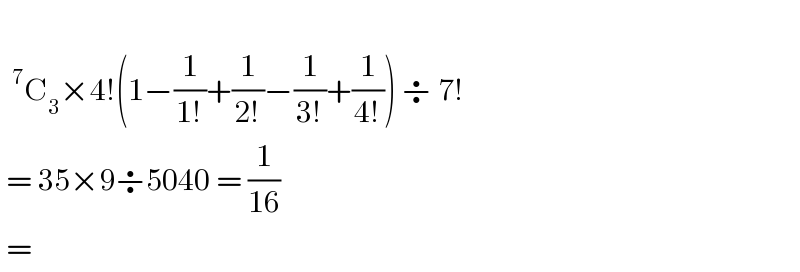
Question and Answers Forum
Previous in Probability and Statistics Next in Probability and Statistics
Question Number 114875 by bobhans last updated on 21/Sep/20

Answered by PRITHWISH SEN 2 last updated on 21/Sep/20

Commented by mr W last updated on 21/Sep/20

Commented by PRITHWISH SEN 2 last updated on 21/Sep/20

Commented by mr W last updated on 21/Sep/20

Commented by john santu last updated on 21/Sep/20

Commented by PRITHWISH SEN 2 last updated on 22/Sep/20
![!n = n![1−(1/(1!))+(1/(2!))−(1/(3!))+.......+(−1)^n (1/(n!))]](Q114935.png)
Commented by mr W last updated on 27/Sep/20

Commented by PRITHWISH SEN 2 last updated on 22/Sep/20

Answered by soumyasaha last updated on 22/Sep/20

